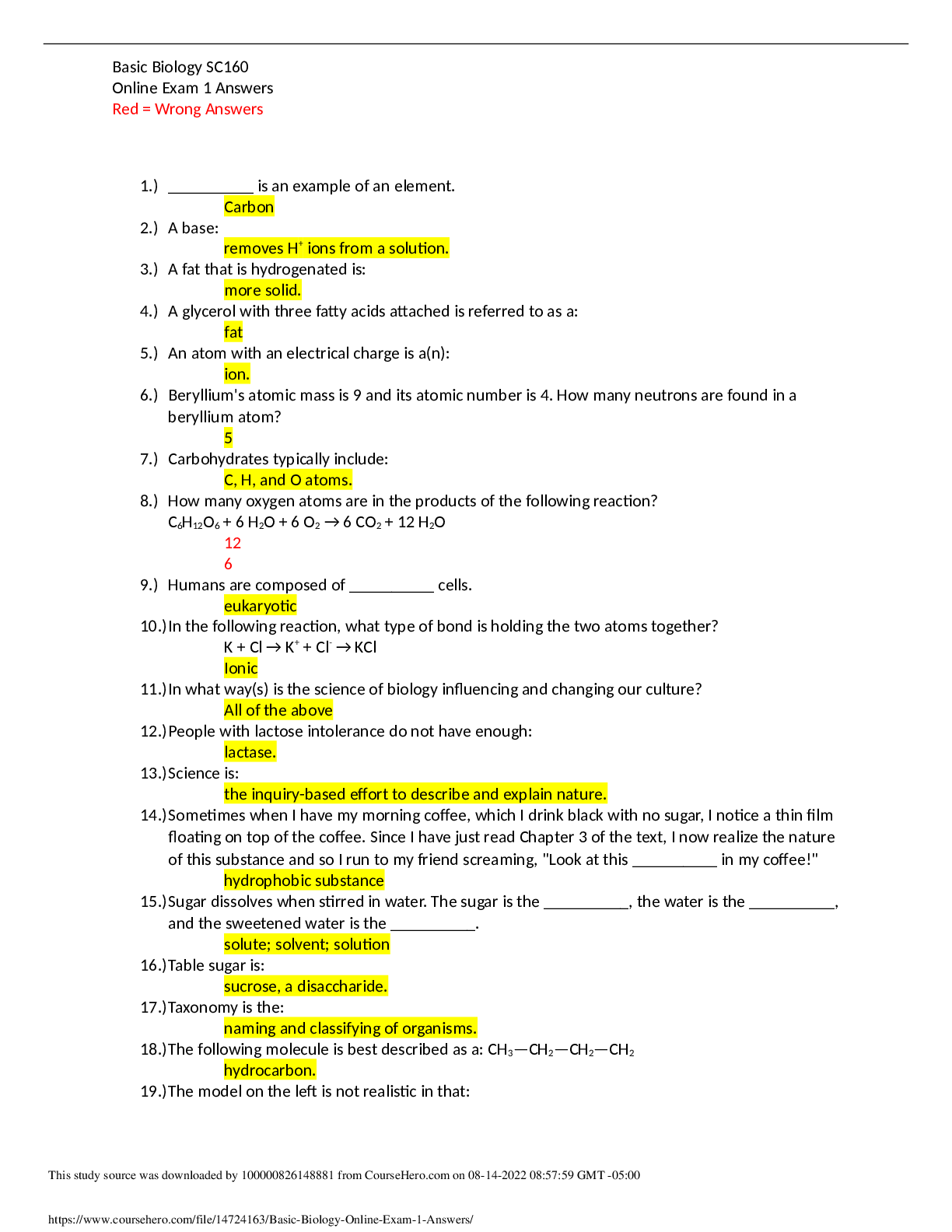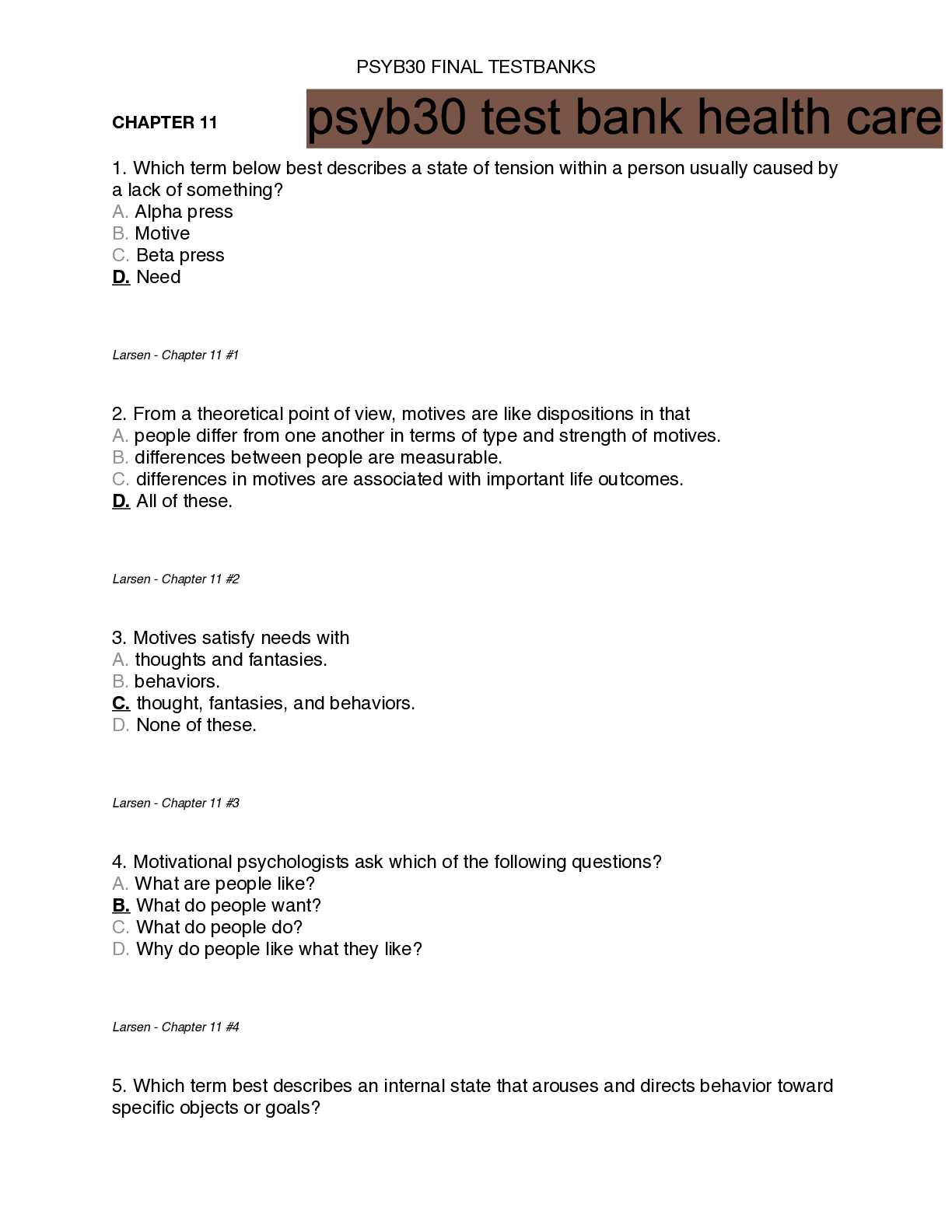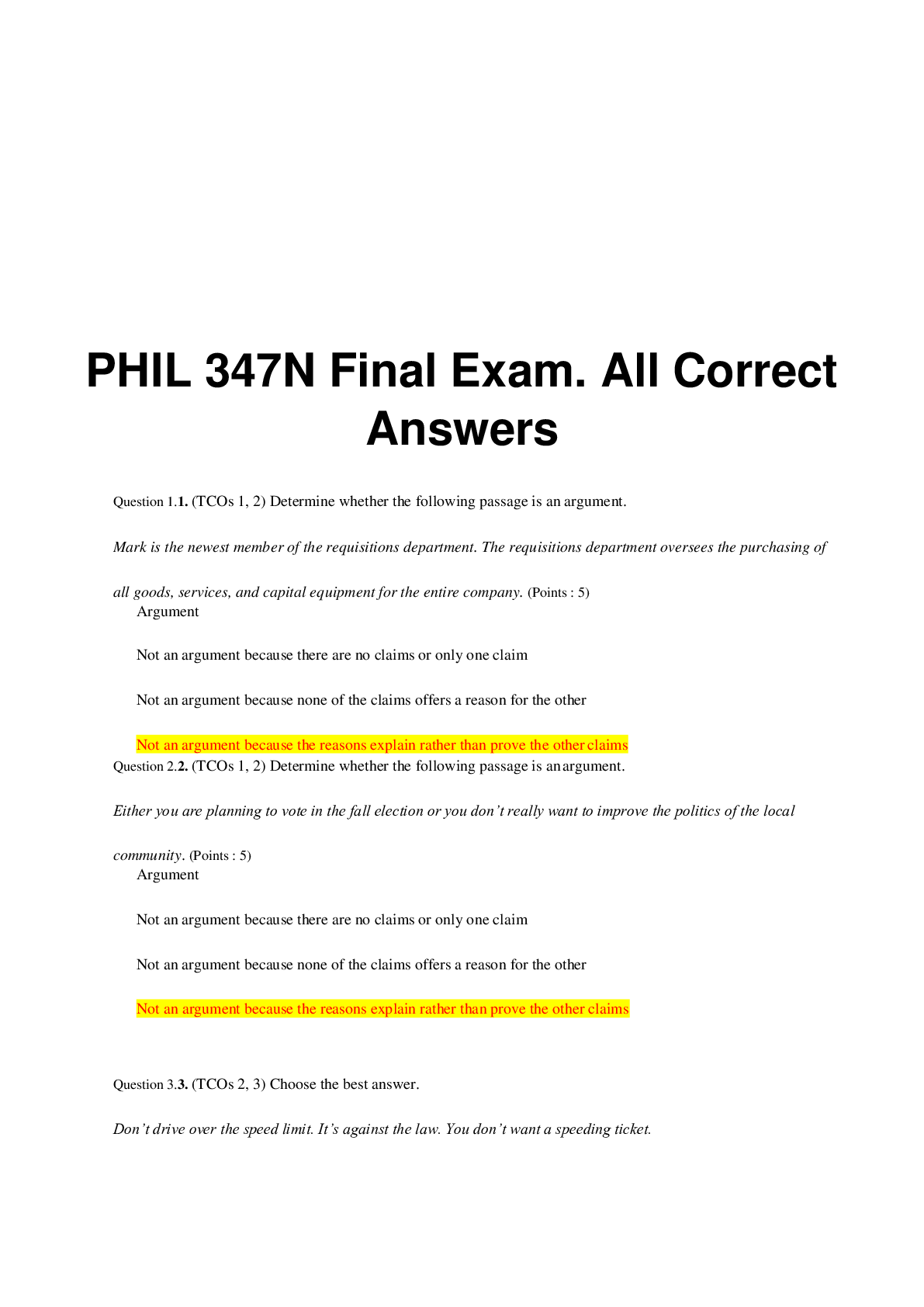Biology > QUESTIONS & ANSWERS > Atkins or Fadkins (All)
Atkins or Fadkins
Document Content and Description Below
1) First, find out what nutrients Janine and Mitchell are talking about. Using a biology textbook and the resources listed, describe what the following molecules are and what they are used for in the ... human body. List some specific examples of each. Also list major dietary sources of each. a. Proteins Description: macromolecules made of amino acids Functions: cell synthesis and repair, transporting molecules in the blood, speed up chemical reactions, serve as antibodies, and store amino acids Examples: rice, beans, meat, whole-grain cereal, legumes, nuts, seeds, milk b. Carbohydrates Description: molecules that contain carbon, hydrogen, and oxygen Functions: it’s a quick source of energy; it helps the nerve tissues, primary energy source, fat and protein metabolism, and energy reserves in stored glycogen. Examples: starch, sugars, breads, cereals, vegetables, fruits c. Fats macromolecules made of amino acids. Proteins have many functions in the body. Some sources of proteins are whole-grain cereals, dark breads,rice, beans, and meat. Proteins are: -forming collagen and keratin -transporting molecules in the blood -quicken chemical reactions b. Carbohydrates- molecules that contain carbon,hydrogen, and oxygen. Some sources of carbohydrates are sugars, breads, cereals, vegetables, and fruits Carbohydrates are: -quick source of energy -best for the brain and nerve tissues -there are simple and complex carbohydrate c. Fats- type of lipid and usually come from animals. Sources can be lard and butter. Fats are: -needed for vitamin absorption -creating cell lipids and steroids. -excess energy is stored as fat in the human body macromolecules made of amino acids. Proteins have many functions in the body. Some sources of proteins are whole-grain cereals, dark breads,rice, beans, and meat. Proteins are: -forming collagen and keratin -transporting molecules in the blood -quicken chemical reactions b. Carbohydrates- molecules that contain carbon,hydrogen, and oxygen. Some sources of carbohydrates are sugars, breads, cereals, vegetables, and fruits Carbohydrates are: -quick source of energy -best for the brain and nerve tissues -there are simple and complex carbohydrate c. Fats- type of lipid and usually come from animals. Sources can be lard and butter. Fats are: -needed for vitamin absorption -creating cell lipids and steroids. -excess energy is stored as fat in the human body Description: a large group of compounds made of fatty acids Functions: stores excess energy as fat in the human body, absorbs certain nutrients, maintains core body temperature Examples: olive oil, avocado, nuts, soymilk, salmon, tuna, butter, red meat [Show More]
Last updated: 2 years ago
Preview 1 out of 5 pages

Buy this document to get the full access instantly
Instant Download Access after purchase
Buy NowInstant download
We Accept:

Reviews( 0 )
$12.00
Can't find what you want? Try our AI powered Search
Document information
Connected school, study & course
About the document
Uploaded On
Aug 12, 2021
Number of pages
5
Written in
Additional information
This document has been written for:
Uploaded
Aug 12, 2021
Downloads
0
Views
48


























